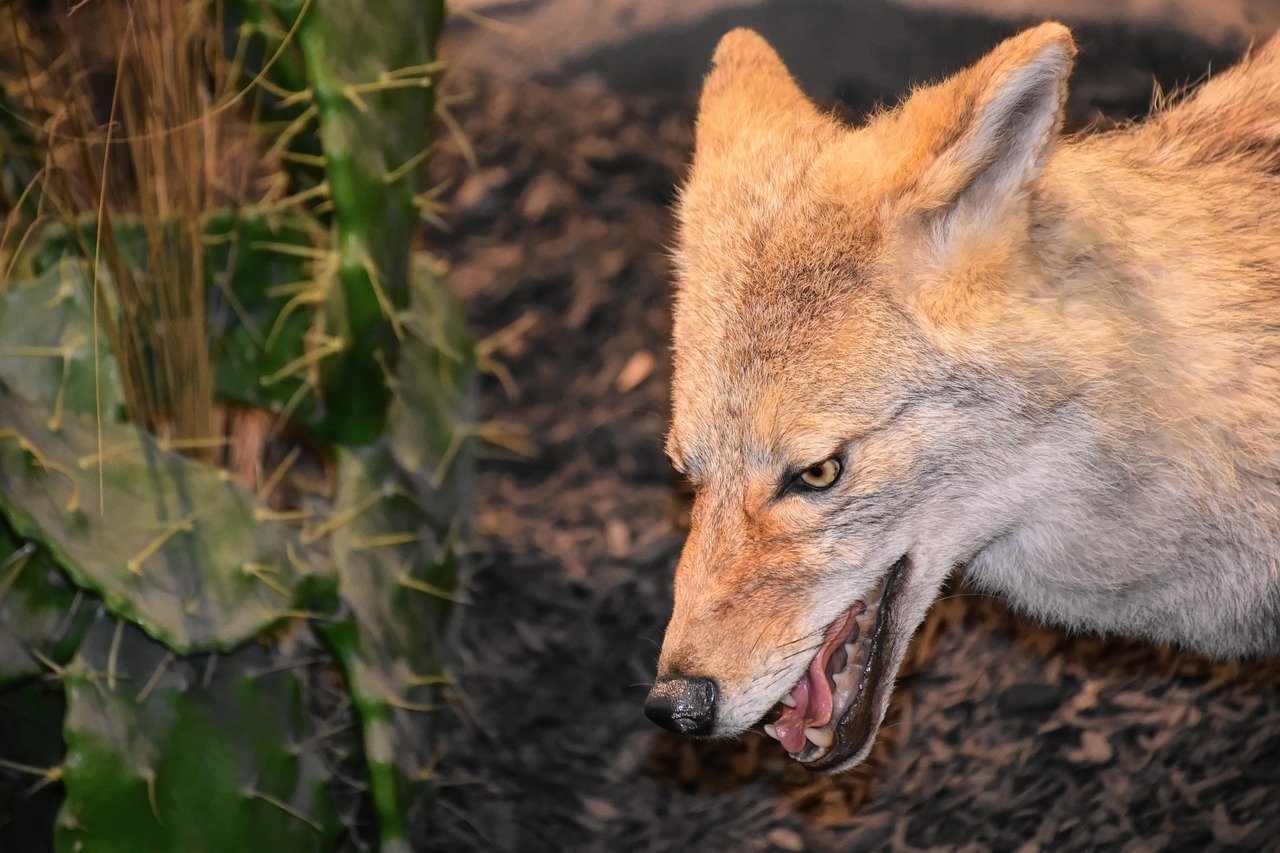Coyotes, often seen as mysterious and elusive creatures, have increasingly become a part of urban and suburban landscapes. For dog owners, understanding the behavior and habits of these wild animals is crucial to keep their furry friends safe. Despite their shy nature, coyotes can pose potential threats to our dogs. This article looks into what every dog owner should know to keep their pets safe.
Understanding Coyote Behavior

Coyotes are incredibly adaptable animals. They can thrive in a variety of environments, from rural areas to bustling cities. Known for their cunning and keen survival skills, coyotes primarily hunt small mammals, but their diet can also include fruits and vegetables depending on availability. Understanding their behavior is key for dog owners. Coyotes are generally shy around humans but can become bold if they lose their fear. This often happens when they associate humans with food. Dog owners should be aware of this possibility and ensure their pets do not inadvertently attract these wild animals.
The Importance of Supervised Outdoor Time

Allowing dogs to roam unsupervised, especially in areas known for coyote activity, can be risky. Coyotes are opportunistic hunters and may see small dogs as prey. Even larger dogs can be at risk if they are perceived as a threat to a coyote’s territory or pups. Supervising your dog’s outdoor time, particularly at dawn and dusk when coyotes are most active, can significantly reduce the risk of an encounter. Always keep an eye on your surroundings and be prepared to retrieve your dog if a coyote is spotted.
Recognizing Coyote Habitats
Coyotes are highly adaptable but tend to prefer areas where they can easily find food and cover. This includes wooded areas, parks, and even golf courses. Dog owners should be aware of these potential habitats and exercise caution when walking their dogs in such areas. Knowing the signs of coyote presence, such as tracks or scat, can help you stay alert. It’s also wise to avoid areas known for coyote sightings, especially during their breeding season, which can make them more territorial.
Secure Your Home and Yard

Ensuring your home and yard are secure can prevent coyotes from coming too close to your pets. Fencing should be tall and sturdy, as coyotes are excellent jumpers. Consider adding coyote rollers to the top of fences to further deter them. Additionally, remove any potential food sources such as pet food, fallen fruit, or accessible garbage. Motion-activated lights and sprinklers can also be effective in keeping coyotes at bay. Remember, a secure environment is a safer environment for your pets.
Keep Pets on a Leash
One of the simplest yet most effective ways to protect your dog from coyotes is to keep them on a leash during walks. This not only prevents your dog from wandering off but also ensures that you have better control in case of a sudden encounter. A retractable leash is not recommended, as it can give your dog too much freedom and make it harder to reel them in quickly. Keeping your dog close allows you to intervene swiftly and safely.
Training Your Dog for Safety
Training your dog to respond reliably to commands such as “come” or “leave it” can be invaluable in a potentially dangerous situation. These commands can redirect your dog’s attention and bring them back to safety if a coyote is nearby. Regular training sessions can reinforce these commands and ensure your dog responds promptly. This training is particularly important in areas where wildlife is prevalent. The better trained your dog is, the less likely they are to chase after or confront a coyote.
Understanding Coyote Body Language
Coyotes, like many animals, communicate through body language. Recognizing signs of aggression or fear in a coyote can help you gauge the situation and respond appropriately. A coyote with raised hackles, stiff legs, or a lowered head may be feeling threatened and could be more likely to attack. Conversely, a coyote showing submissive behavior, such as a lowered tail or avoiding eye contact, may be less of a threat. Understanding these signals can help you make informed decisions about your next steps.
Deterring Coyotes Humanely
There are several humane ways to deter coyotes from approaching you and your dog. Making loud noises, such as clapping or using a whistle, can scare them away. Carrying a walking stick or umbrella can also be useful for creating a larger visual deterrent. It’s important to remember that the goal is to encourage coyotes to maintain their natural wariness of humans. Avoid actions that could harm the animals, as this can often escalate the situation and lead to more aggressive behavior.
Community Awareness and Action

Working together with your community can be a powerful tool in managing coyote encounters. Sharing information about sightings and behavior can help everyone stay informed and prepared. Community-led initiatives, such as educational workshops or coyote monitoring groups, can also be effective in promoting coexistence. Encouraging neighbors to secure trash and remove food sources can reduce coyote activity in residential areas. A collective effort ensures a safer environment for both pets and humans.
Understanding the Role of Wildlife Authorities
In cases where coyotes become a persistent problem, contacting local wildlife authorities can be a necessary step. They can provide advice on how to manage coyote encounters and may intervene if a coyote poses a significant threat. However, it’s important to remember that lethal control is often a last resort. Wildlife authorities aim to promote coexistence and will usually recommend non-lethal methods first. Keeping their contact information handy can be an important part of your pet safety plan.
Understanding and respecting the presence of coyotes is key to ensuring the safety of our beloved pets. By staying informed and taking proactive measures, dog owners can significantly reduce the risk of negative encounters with these fascinating yet potentially dangerous creatures.





